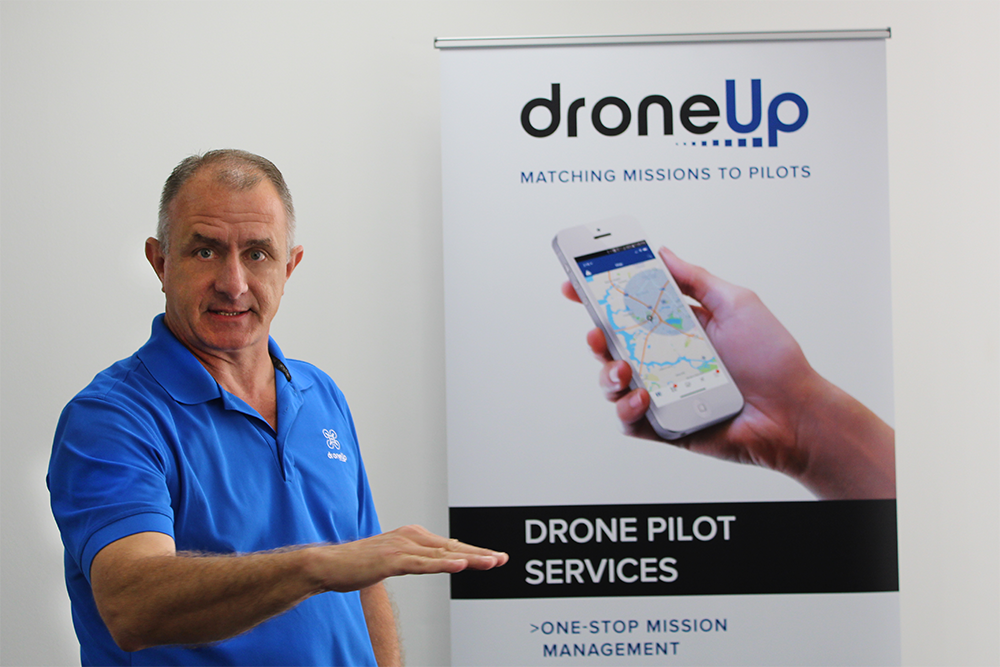Tom Walker is the CEO of DroneUp, which connects drone clients with qualified drone pilots through their Mission Match™ process. This process not only allows them to identify qualified and available pilots but also enables them to securely communicate with them in real-time and monitor their operations to ensure safety and quality data collection. This solution speaks to the two principles that DroneUp was founded on.
“One, there would be a ‘man’ in the ‘unmanned world,’ flying, operating and maintaining the drone,” Walker said. “Two, very few organizations would be able to maintain all the assets, pilots and oversight to respond to any situation they might face. DroneUp was designed to manage all the data collection operations, including flight management, pilot selection and assignment, and data processing to allow our customers to more rapidly reap the rewards of this new capability.”
"We have to stop acting like drone people building a business, and start acting like business people building an industry," from Tom Walker of @godroneup at @InterDroneExpo #InterDrone pic.twitter.com/yDqAF8ZNzA
— Jeremiah Karpowicz (@jeremiahkarp) September 5, 2019
His experience with enabling these benefits was the focus of his Interdrone keynote as he highlighted the benefits that the technology represents right now. While many people talk about the eventual value of the technology that will be opened up when things like BVLOS operations and flights over people are more easily enabled,
As an example of what that demand and growth looks like, DroneUp recently announced that it was awarded a multi-state contract for Unmanned Aerial Systems (UAS) services by the Commonwealth of Virginia. As part of that agreement, DroneUp will use the contract to provide drone services to all state agencies, institutions of higher education and other public sector entities in Virginia.
It’s a development that speaks to how such organizations are approaching the adoption of drone technology. In Virginia, a group of agency leaders recognized the need for a vehicle that would allow state agencies to utilize commercial UAS operators. They worked together to develop an outline for a request for proposal (RFP), and the National Association of State Procurement Officers (NASPO) recognized that the value of this contract would extend beyond Virginia to every state. The RFP was issued
“Prior to the RFP competition, there were two major roadblocks to the state-agency utilization of commercial UAS companies,” Walker told Commercial UAV News. “First, there had been no competitive vetting to identify qualified companies to provide these services. Second, there had been no process to establish standardized pricing for these services. This contract now will allow public-sector agencies to more strongly consider the utilization of commercial UAS services.”
By lowering the barrier to acquisition of these services for public and private sectors, Walker and his company have been able to help these organizations identify drone applications with the most benefit to them. By sharing that information with other states, he’s helping drive an increase in the pace of adoption and standardization.
This development is just a hint of the enormous potential that drone technology represents. These kinds of small wins are helping to establish confidence in the long-term viability of UAS integration, all of which will be built on the value that it’s creating in the present.
Walker is set to explore the importance of drone integration in the present at the Commercial UAV Expo, where he’ll participate in a CEO Panel Discussion. This discussion will highlight insights and strategies for success in the current marketplace also with his vision of future challenges and opportunities.















Comments